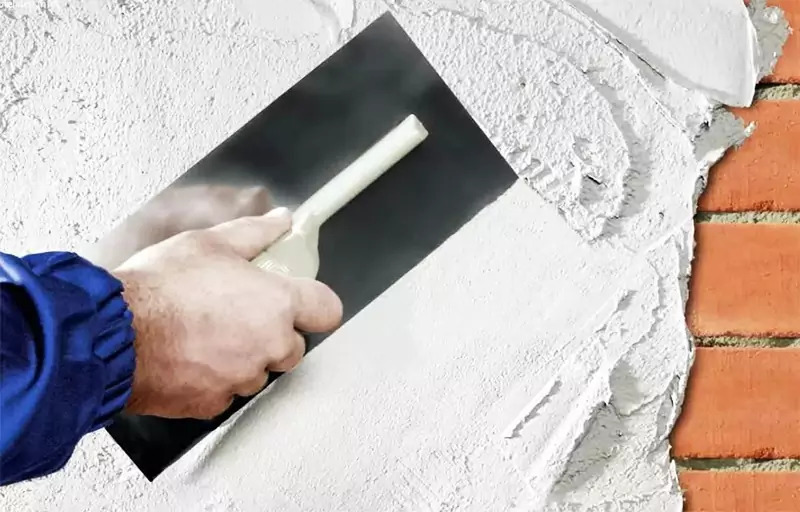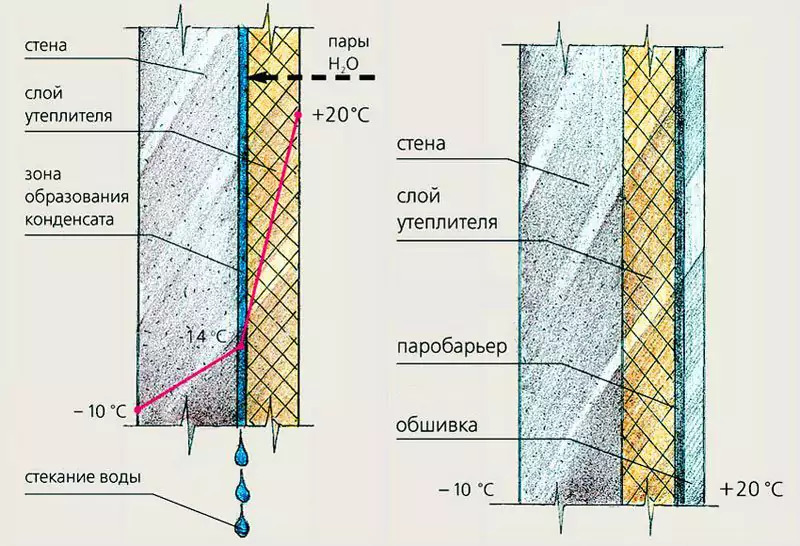Even if there are beds and flower beds on your site, there is an alpine slide and a small pond - this does not mean at all that there is a correct and harmonious landscape design. It often happens that a lot of time and money has been spent, but the desired result has not been achieved. Let's try to figure out what landscape design is and what are its varieties.
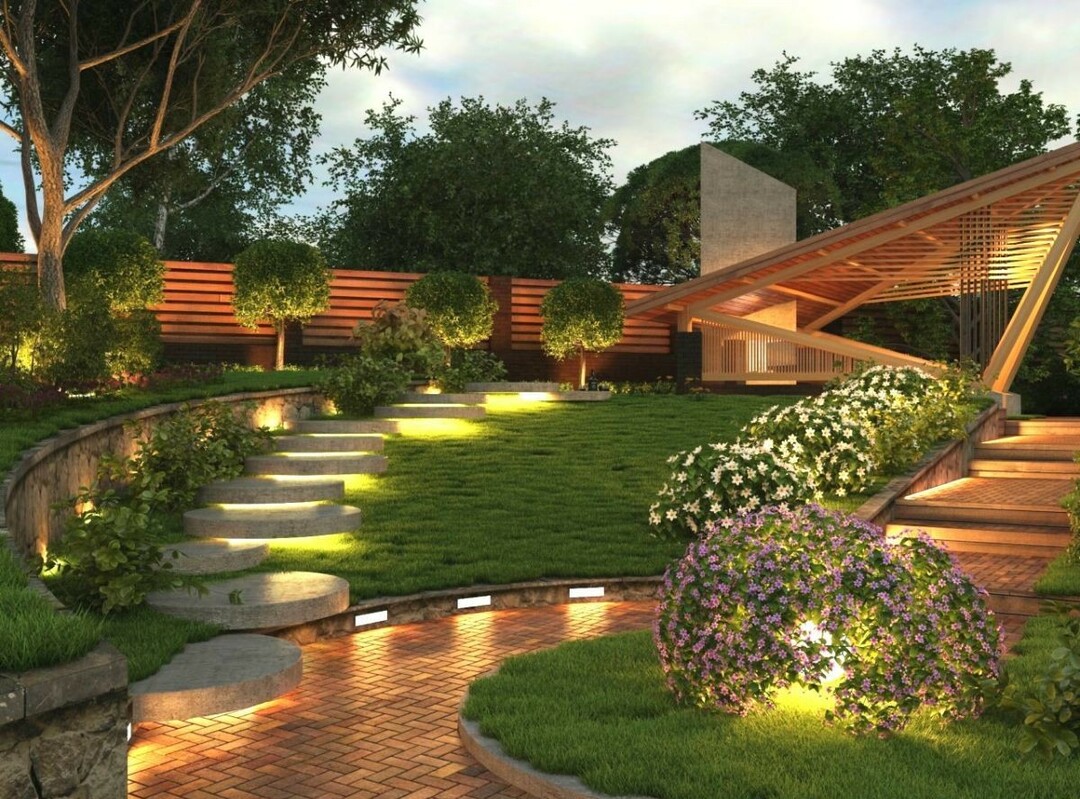
On a suburban area, there is a special freedom of creativity.
What is landscape design
Content
- What is landscape design
- Design
- Plant growing
- Culture
- The main elements of landscape design
- Landscaping styles
- English
- Dutch
- Country
- Chinese
- Scandinavian
- VIDEO: Modern trends in landscape design.
- 50 site design options in modern styles:
The concept of landscape design appeared at the turn of the XIX-XX centuries, although, in fairness, it is worth noting that people involved in improvement of gardens and parks, have existed since ancient times (this, in particular, can be judged by one of the wonders of the world - the Hanging Gardens Semiramis). Even in Russia in the XVIII-XIX centuries there were so-called "organizers of parks and gardens" who were engaged in "garden and park art".
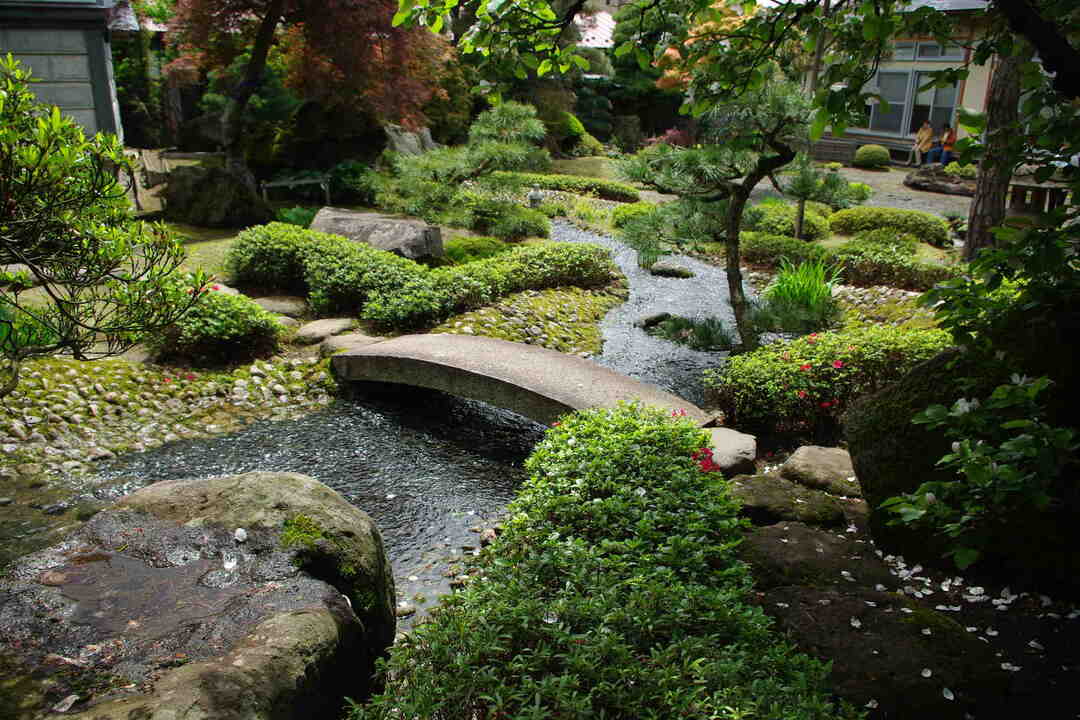
The owner can realize any idea, build the space around the house in his own way.
In general, before much less attention was paid to the design or decoration of the site. The main efforts were directed towards practical benefits - for example, getting a good harvest.
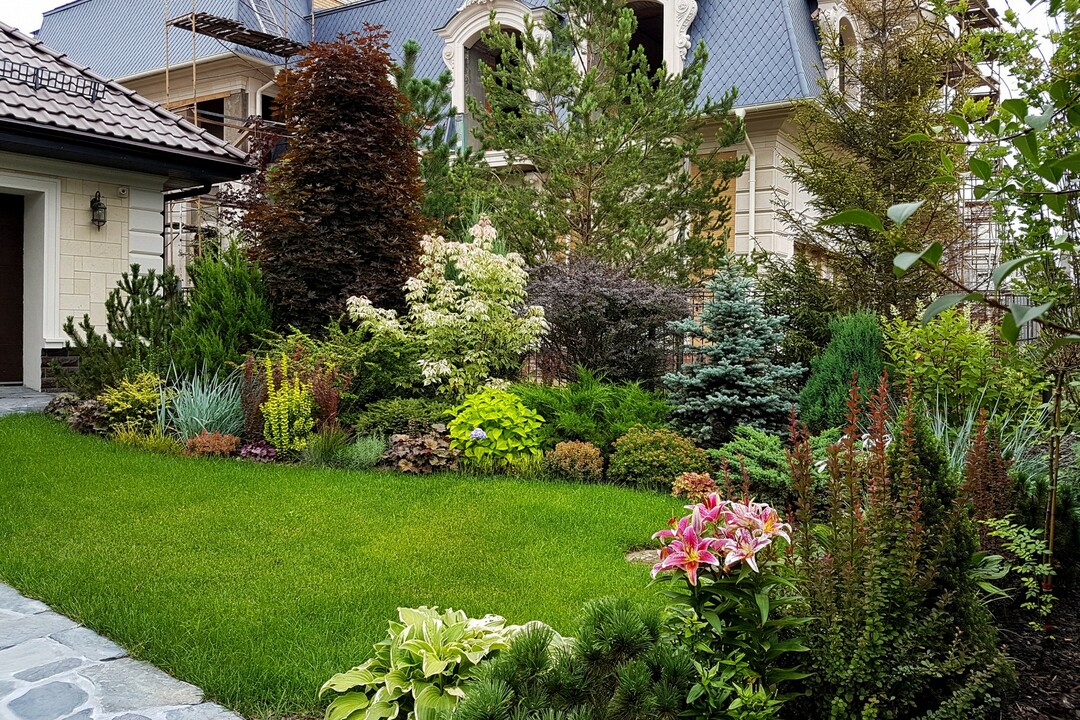
All components of landscape design fit well into the “combine top, bottom and shape” rule.
Nowadays, no one doubts that landscape design is an art that requires certain knowledge and skills, and is impossible without financial investments.
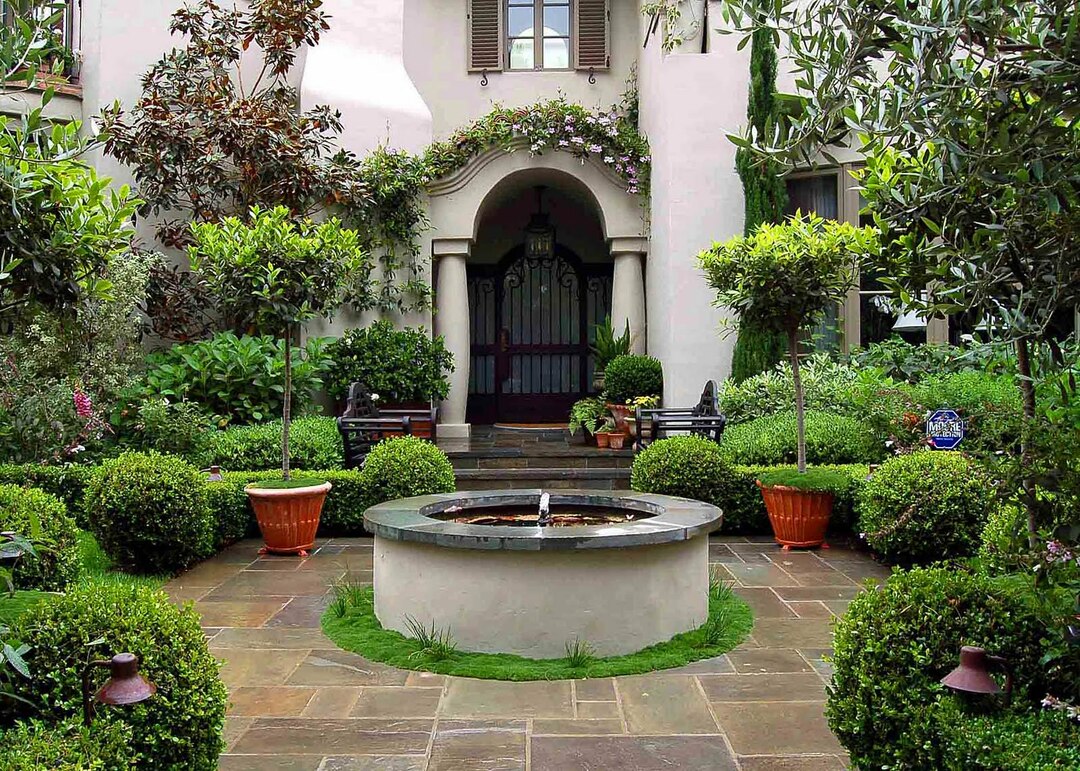
When developing a landscape project, it is necessary to connect the vertical and horizontal planes.
We can safely say that this direction is based on three main components:
- Architecture and design;
- Botany and plant growing;
- Philosophy and Culture.
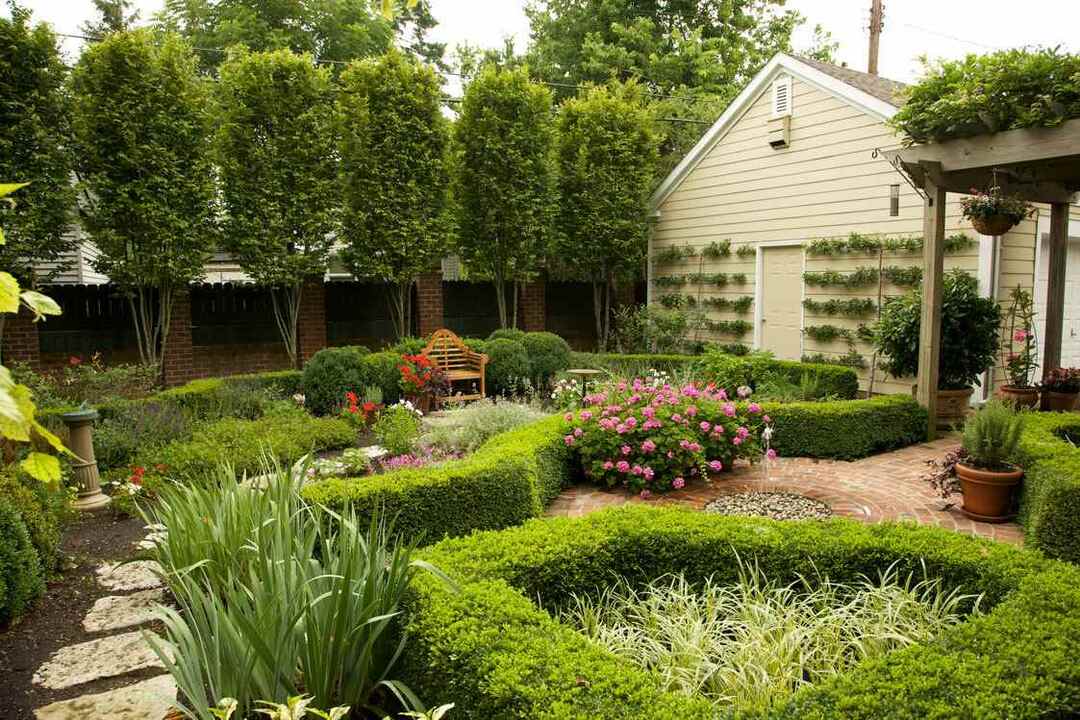
It is important to emphasize the required volume, to create a single space where nothing will be discordant with the general style solution.
Design
This is truly a key point. To begin with, a detailed plan of the site is drawn up on paper and all future objects are "placed" on it. This is only at first glance, everything is extremely simple, but in fact, the components of the future landscape masterpiece should be arranged in strict accordance with the style. The result should be a complete harmonious composition.
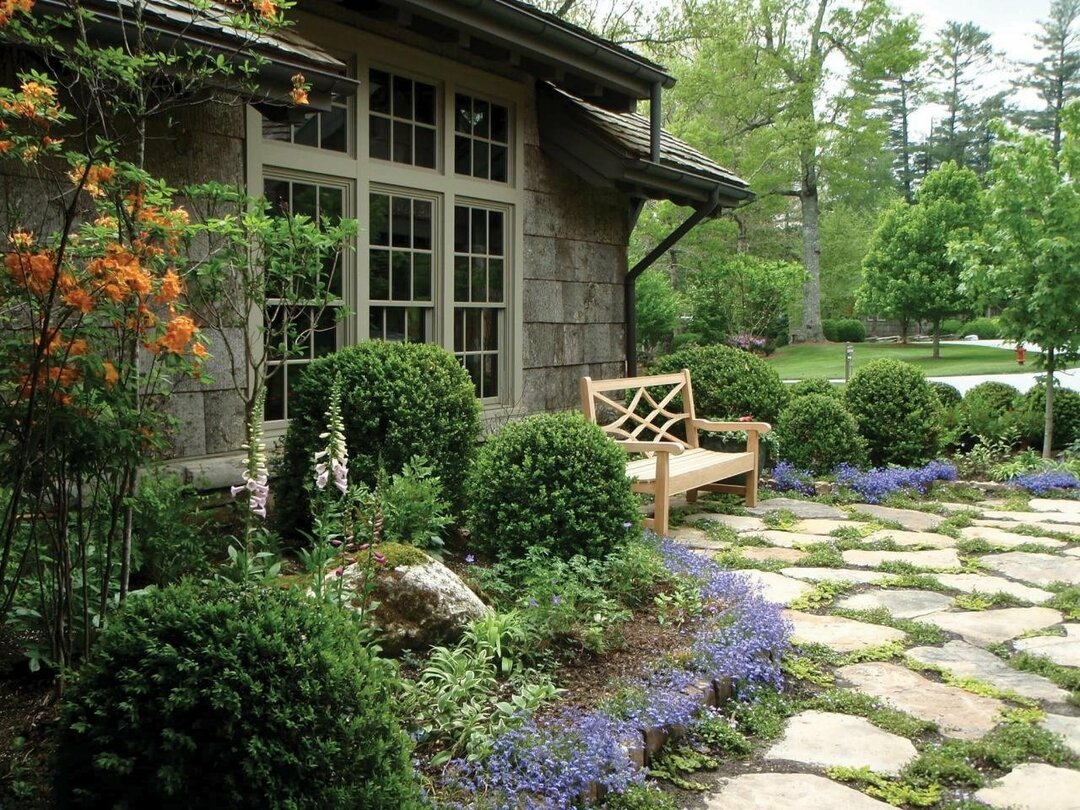
Any style of landscape design is a reflection of the corresponding time, painted with national colors.
In addition, at the design stage, the order of work is determined, for example, when the irrigation system, drainage, lighting, and so on will be installed.
Plant growing
At this stage, the main thing is to correctly determine the terrain, climatic features, as well as the characteristics of the soil cover. Based on this, it is planned to "assortment" of plants that will fully grow and develop, and, which is important, harmoniously "fit" into the overall concept.
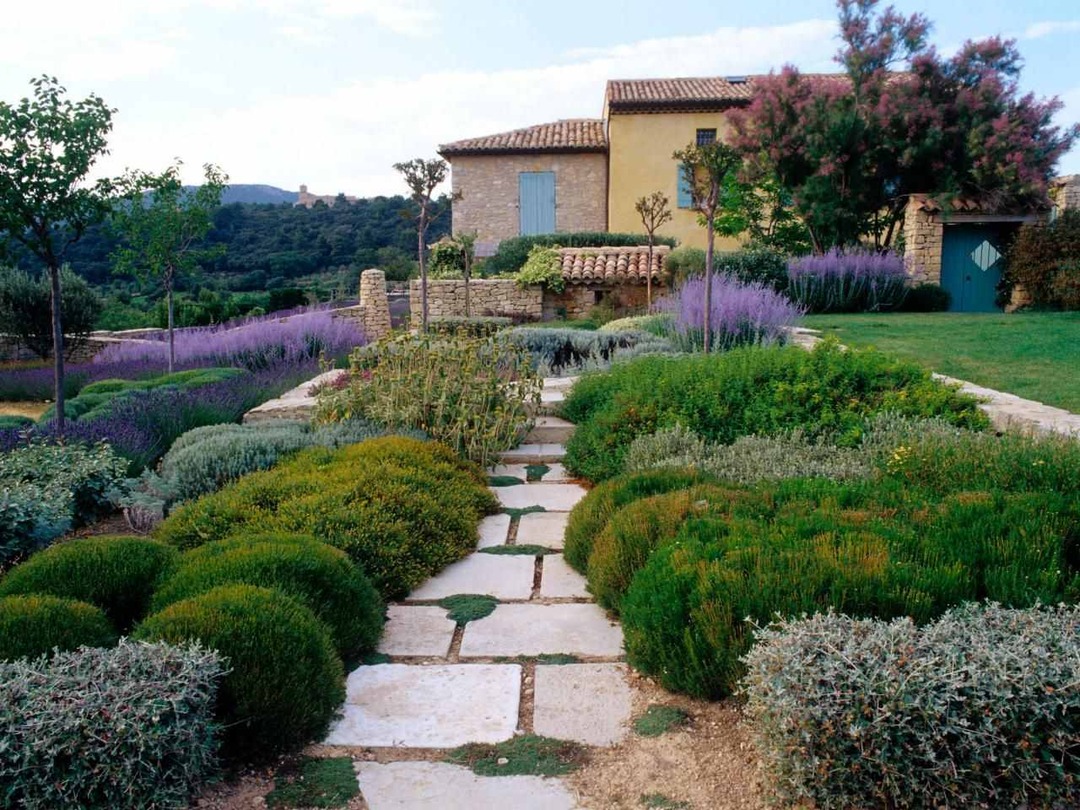
The use of characteristic types of paving, site planning, cutting of hedges, arrangement of mandatory zones draws a spectacular style image.
Culture
This aspect is especially important when creating themed gardens. For example, decorating a Japanese garden or a country garden, it is impossible to ignore the issue of philosophy and cultural origins. In addition to exclusively professional knowledge about plants and stylistics, it is imperative to know what this or that element means, and for what purpose it occupies a certain place.
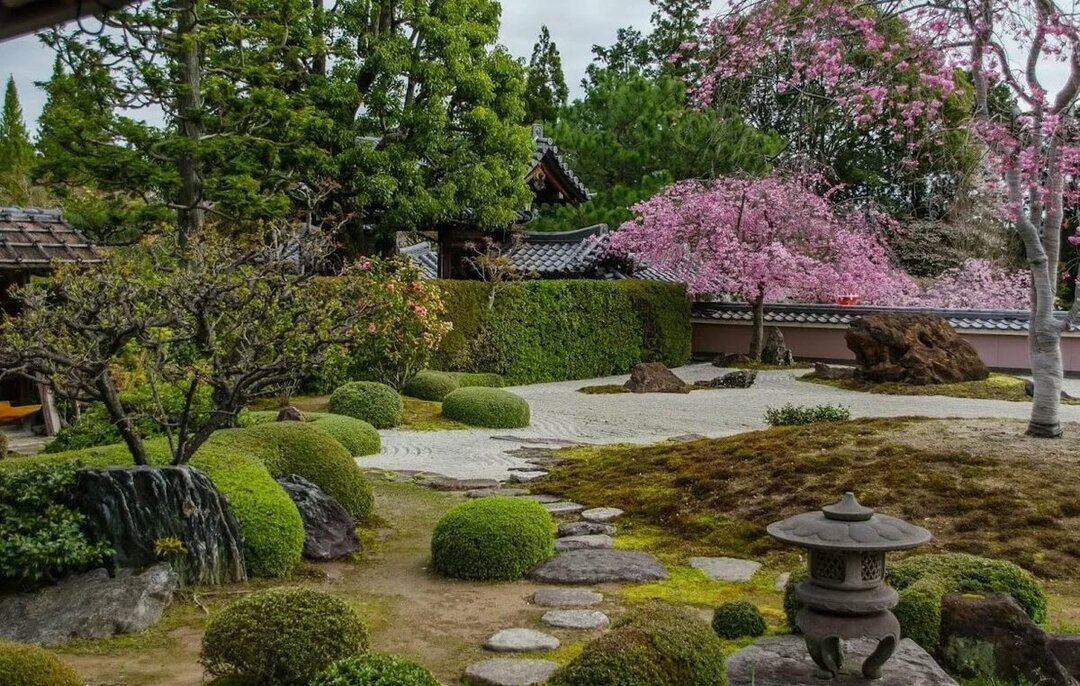
For the modern gardener, it is important to have not only a fertile, but also a stylish beautiful garden and vegetable garden.
The main elements of landscape design
Although the style and meaning of design decisions are different, nevertheless, for the most part, they have a common basis.
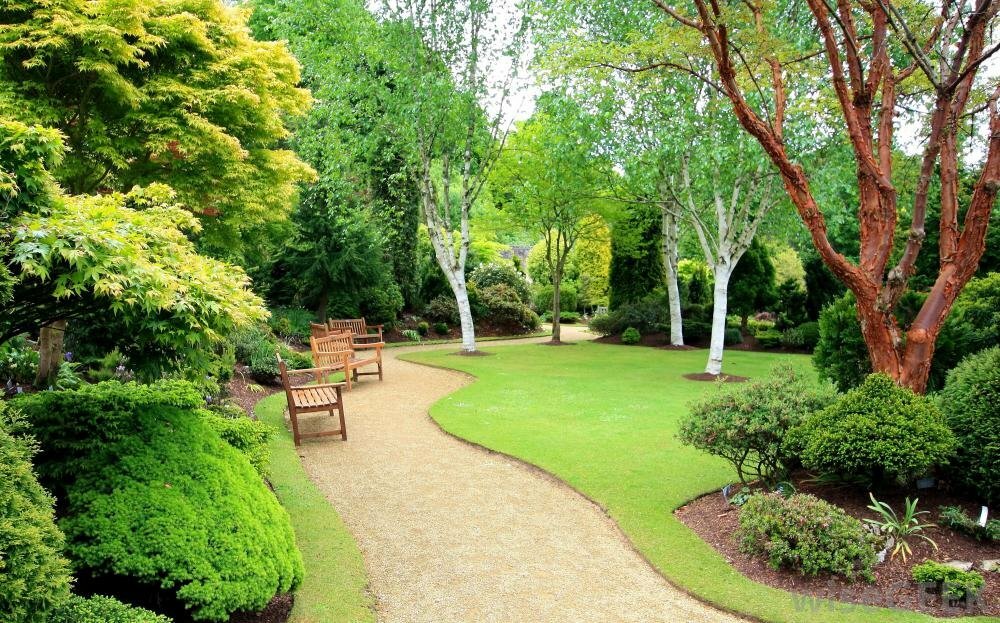
The main condition for the harmonious design of the garden area is the correspondence of the style of the house with the rest of the site.
The basis for creating landscape design in any style:
- Building. It is usually the focal point of a design project.
- Lawn covering. The grasses from which it is created can be different, but the presence of a lawn is required in many stylistic decisions.
- Green spaces. Trees, shrubs, flowers and even whole compositions (flower beds, for example).
- Water source. It can be a pond or stream, a fountain or a small waterfall.
- Paths and platforms.
- Small architectural forms: benches, figurines, arches.
- Small decor. Lamps, pendants, animal figurines.
- Maintenance: lighting, watering.
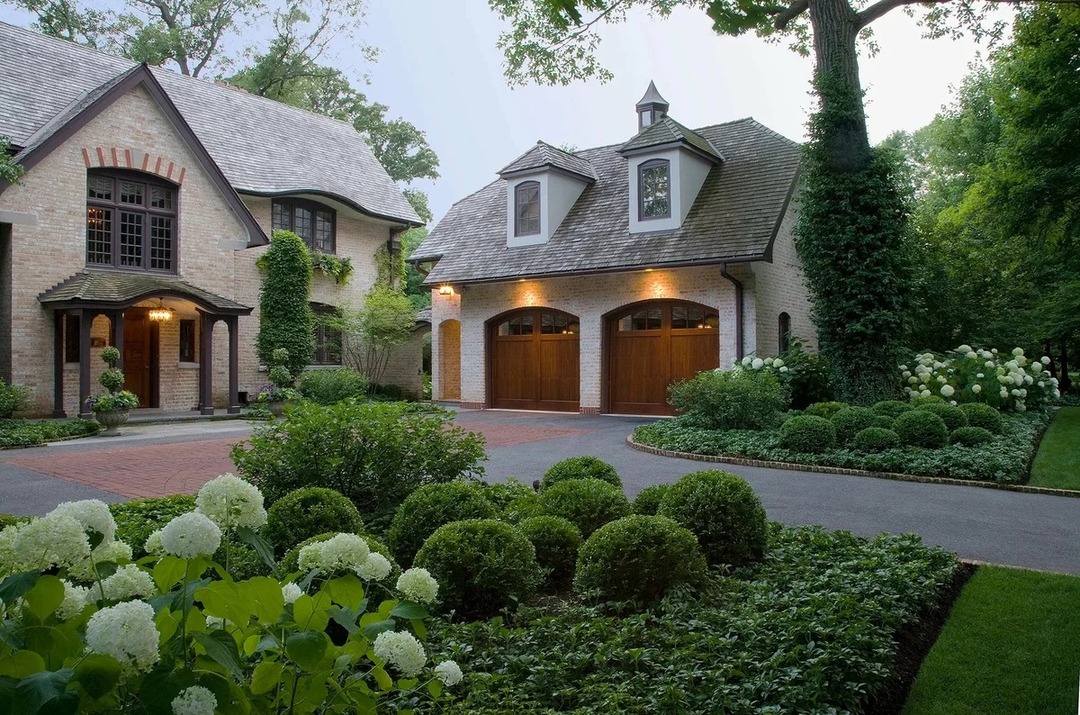
When decorating their site or garden, each person chooses the type of plants and decorations to their liking.
Landscaping styles
The main types of landscape design:
- Regular or classic. This design of the site assumes an abundance of regular shapes and straight lines. Preference is given to ceremonial flower beds and lawns. The reservoirs also differ in regular shapes.
- Landscape. This landscape is very reminiscent of natural beauty. The elements are whimsical and follow the shape and color of natural objects. There are no clear lines and regular shapes.
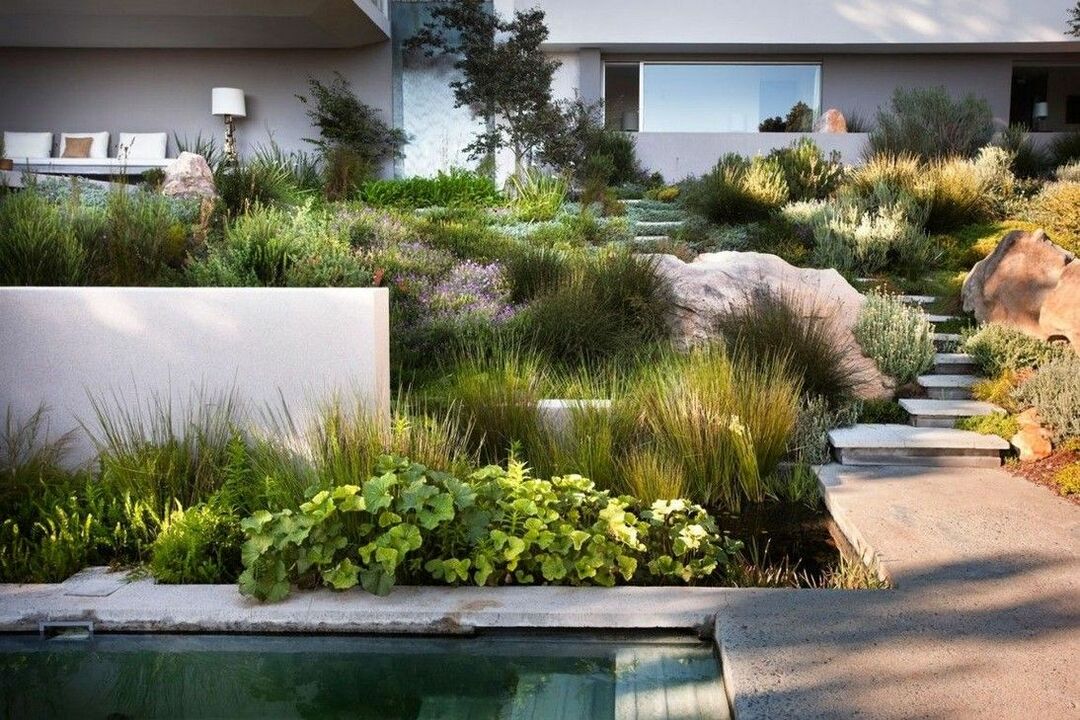
If you are planning an interesting garden plot, one of the best solutions is to stick to a certain style.
Each variety has its own styles. What are the styles in landscape design?
English
As the name suggests, foggy England is considered the birthplace of this style. The style was born at the very beginning of the 18th century, and its main idea is to preserve the pristine natural beauty. The English style is a balancing act on the verge of negligence and neatness.
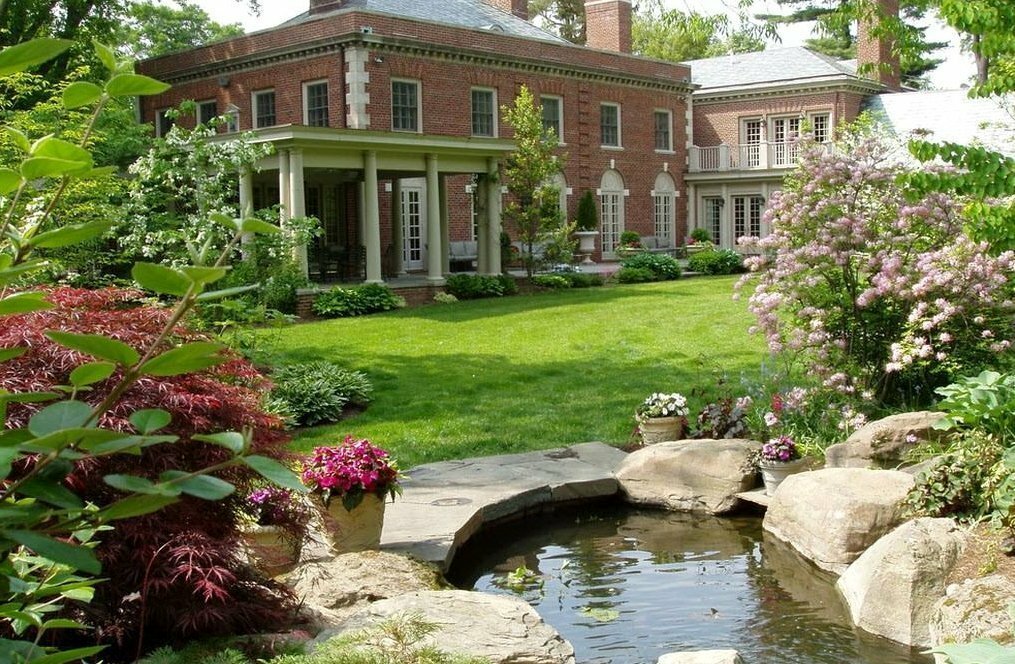
The heroine of Jane Austen's novel "Pride and Prejudice" observed a classic example of the landscape in the English style in the richest estate of Mr. Darcy.
The main criteria for this landscape design:
- Lack of straight lines and clear contours, smooth outlines;
- Abundance of vertical gardening;
- The unity of the home and garden plot;
- Paths, very similar in shape to natural ones, only paved with stone;
- Well-groomed lawns as an additional resting place;
- Using plants of different heights to create picturesque corridors and labyrinths;
- A reservoir (stream) resembling a natural source as much as possible;
- Color contrasts, a riot of colors;
- Large carpet beds.
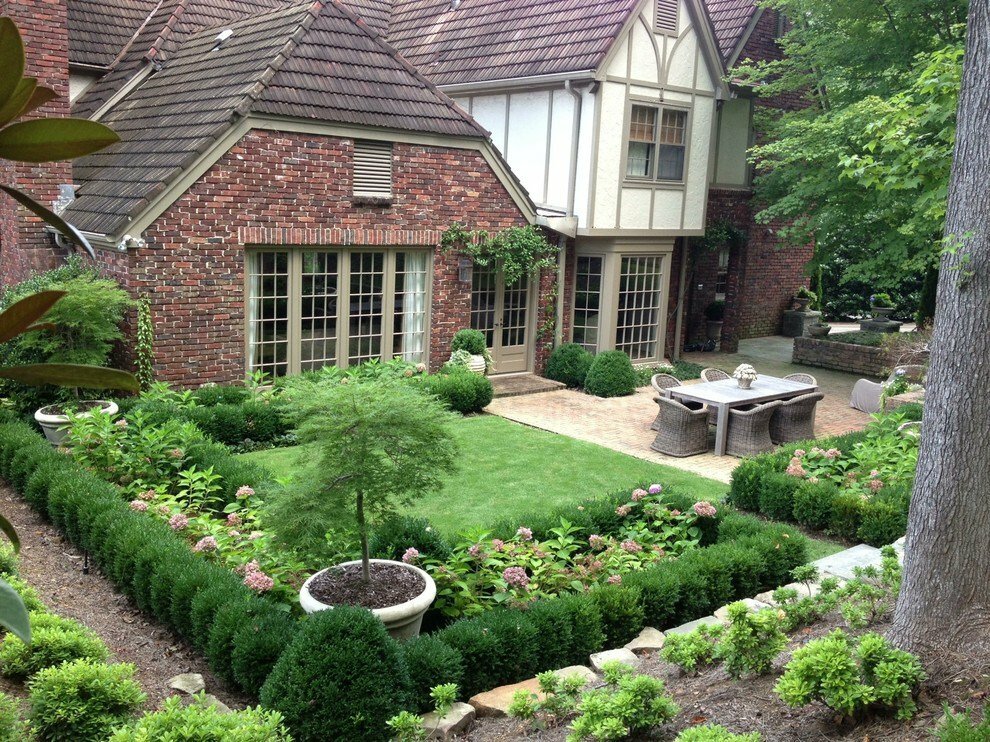
Cold shades of inflorescences, a combination of pink and blue, the absence of flashy accents are preferred.
Usually, such a picturesque garden begins right outside the door of your house, without preludes and preparatory areas. Compulsory components of the English direction are wooden or stone benches, cozy gazebos, small bridges, massive wrought-iron lanterns. So that no one doubts your English garden, be sure to install an old (or very similar to an old) statue in it.
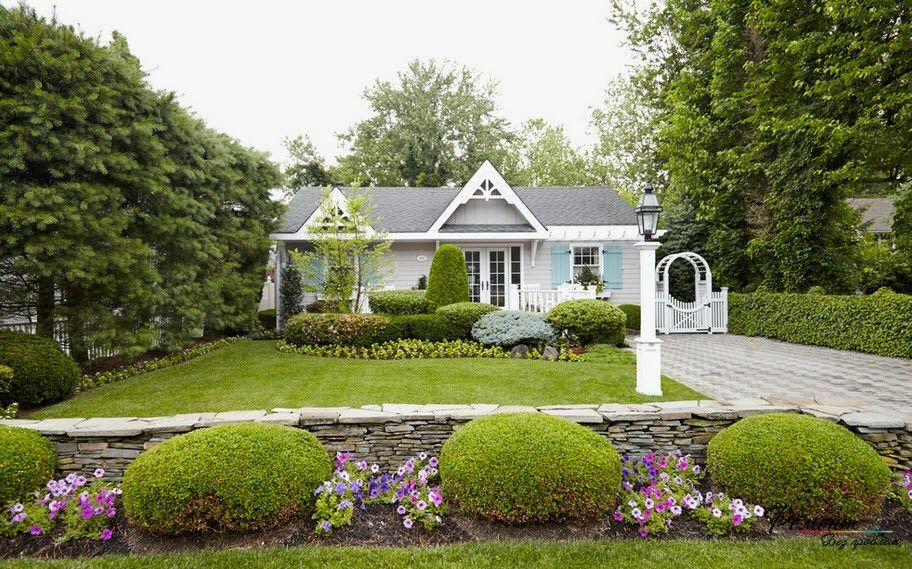
Particular attention is paid to green spaces and lawns: in addition to careful year-round maintenance, there is a careful screening of species by type and color of foliage.
Dutch
An abundance of colors, pastorality and an extremely well-groomed appearance - all this is the Dutch style. A clear idea of this direction of landscape design can be obtained from the paintings of the artists of the Dutch school.

The image of a Dutch garden directly correlates with the character of the inhabitants of this country and its natural conditions.
Main Attributes:
- Parterre lawn;
- Hedge;
- At the forefront are flowers and shrubs, very few trees;
- Mixborders along the garden paths;
- Unusual figurines, decor reminiscent of a rustic style;
- Flower beds in unusual carts.
A house in the Dutch landscape must be entwined with vines. Directly opposite the main entrance is a bright lawn surrounded by bushes and small flower beds. The accent of the lawn is either a standard tree, or a topiary, or a fountain.
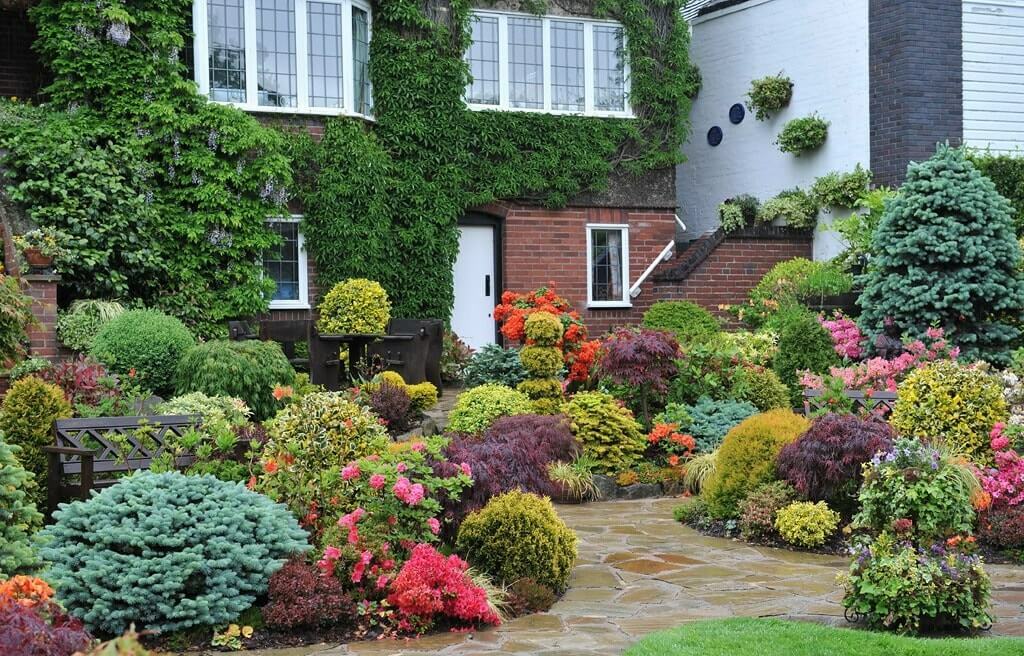
Forced to reclaim space from the advancing sea for life, the Dutch value the land very much, their gardens are very small in size.
Bulbous flowers are considered the main flowers for flower beds in the Dutch landscape: tulips, daffodils, lilies. Delphinium, foxglove, mordovnik are also actively used.
Another important condition for a Dutch garden is openness. The beauty of the site must be enjoyed by all passers-by. So high "blind" fences are inappropriate here. Most often, the boundaries of the garden are indicated by a hedge or a wrought-iron fence with rare twigs.
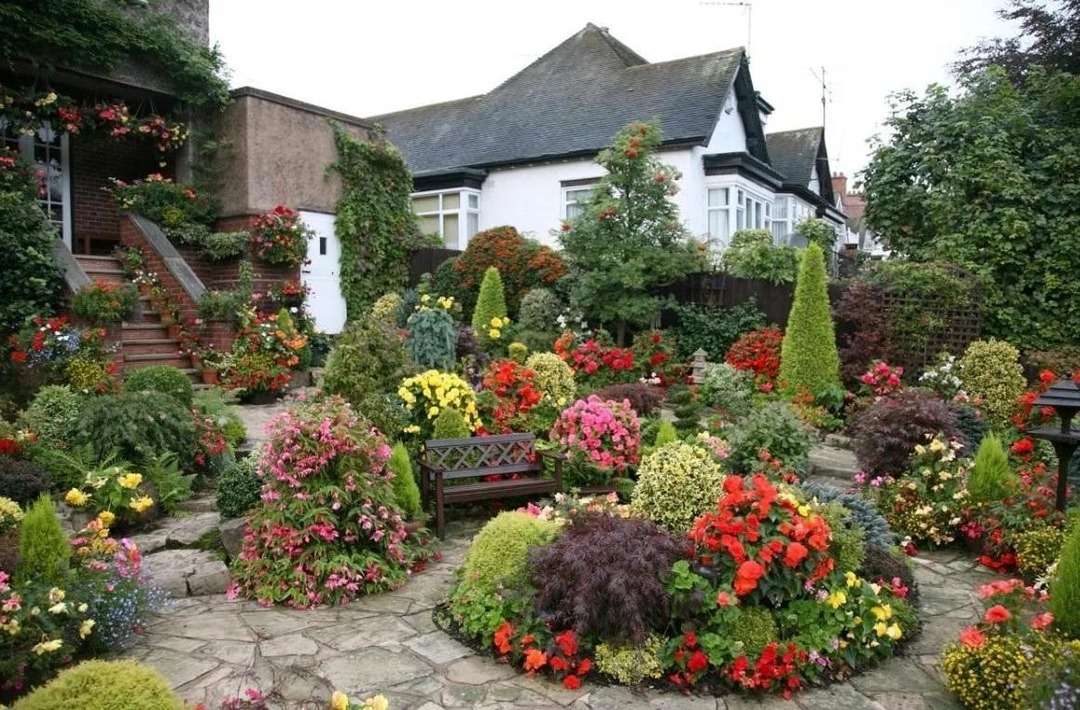
The area is used to the maximum, ordinary trees are replaced by dwarf forms.
The paths are covered with pebbles or chips, platforms are organized on which gazebos or pavilions are installed. But the benches are often "cut" right into the hedge.
Such a garden cannot be imagined without hand-made items. These are figurines, and carts with flower beds, as well as wheels and wooden mills. Wooden buckets, chests of drawers and barrels are fitted under mini flower beds. And small sculptures of such a garden will definitely make you smile: often they are frogs or unusual fairy gnomes.
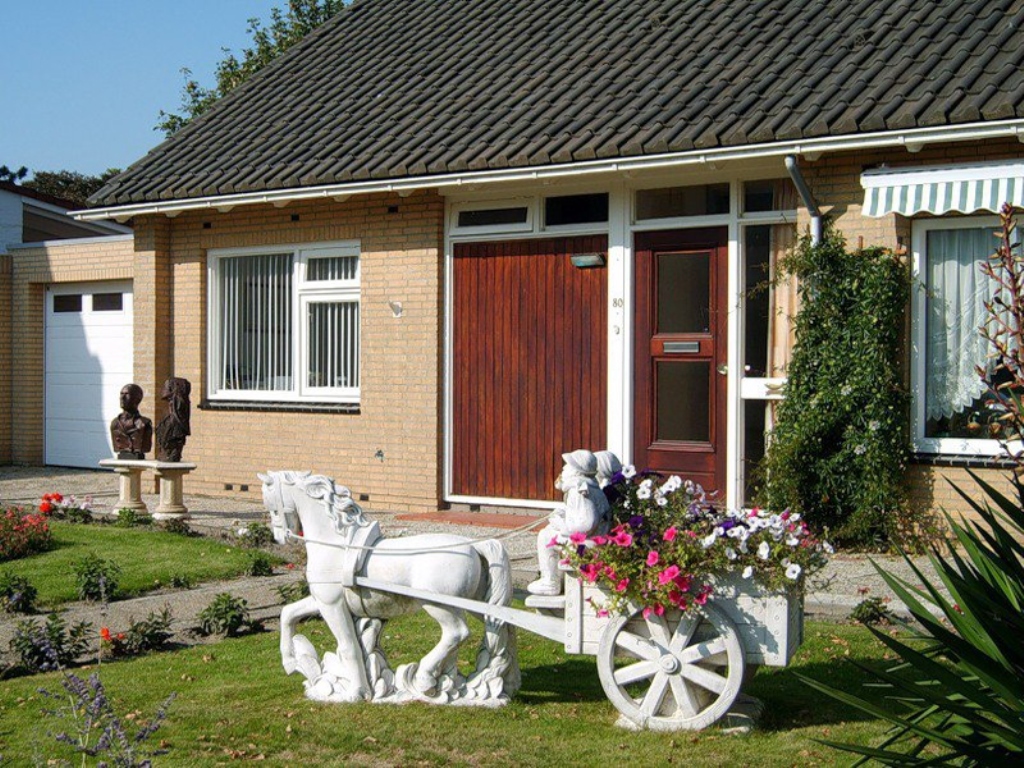
The most spectacular part of the garden is the parterre in front of the house, to arouse the admiration of passers-by.
Country
This style is also called rustic. Naturalness is considered its fundamental principle. This trend does not promote unity with nature, it is itself a natural natural island. And yet there are some country-style rules:
- Light randomness;
- The paths are paved with stones (or strewn with pebbles) in such a way that gaps remain and grass grows;
- Beds and fruit trees and shrubs must be present;
- Flowers in huge quantities, and not only in specially organized flower beds;
- Climbing plants on the fence;
- The presence of elements of village life, for example, a section of wicker tyna, a cart, clay pots and jugs;
- Grouping of horticultural and wild crops.
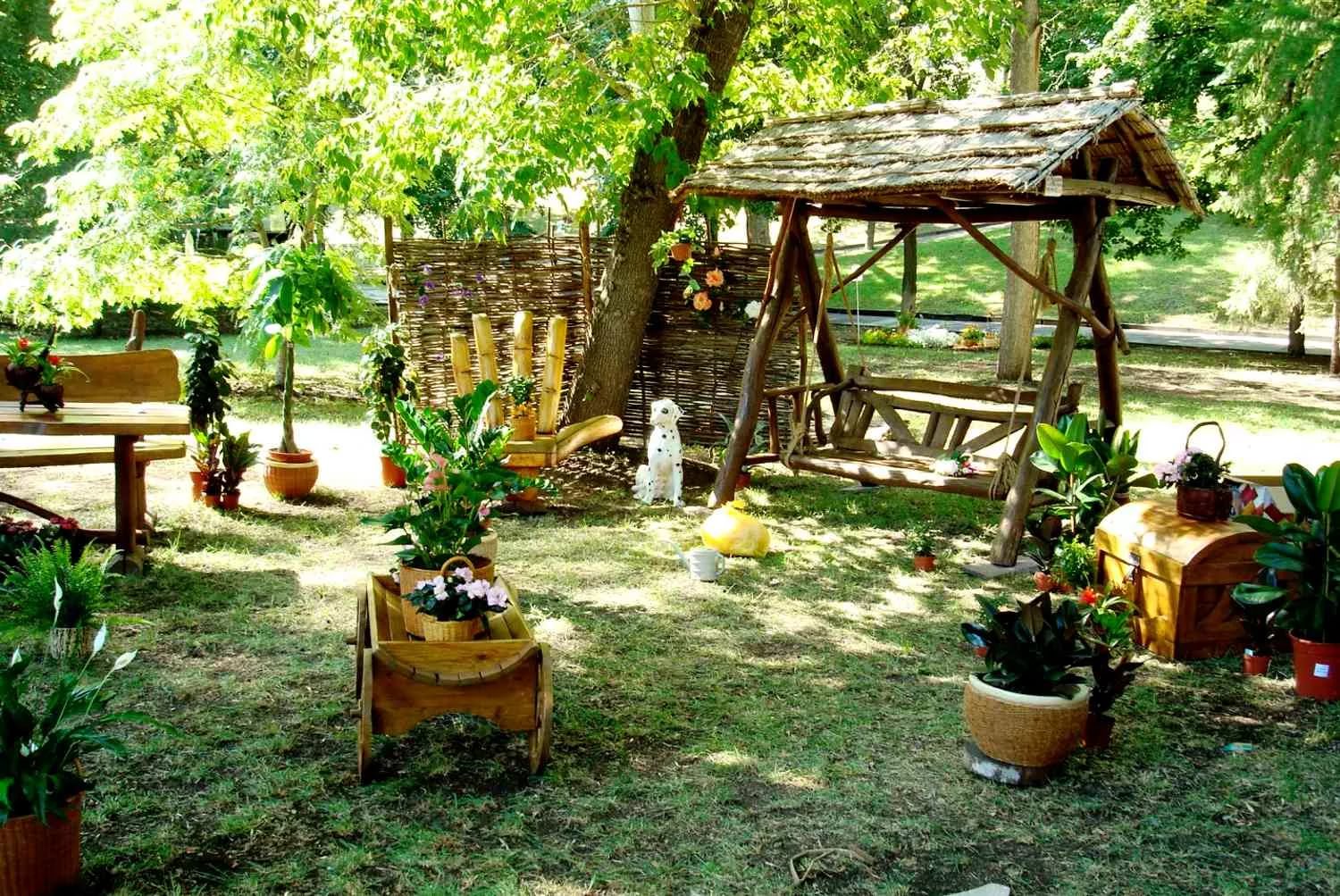
Rustic style (country) landscape design is characterized by some negligence, a touch of antiquity, the lack of perfectly adjusted proportions.
Such a semblance of a rural landscape is built on the unity of natural "disorder" and attentive master's care. By the way, it is better not to arrange fruit trees in one place. Think over the layout in advance and systematically distribute them throughout the site. Yes, and it is not necessary to create a full-fledged vegetable garden, it is quite possible to get by with beds with spices.
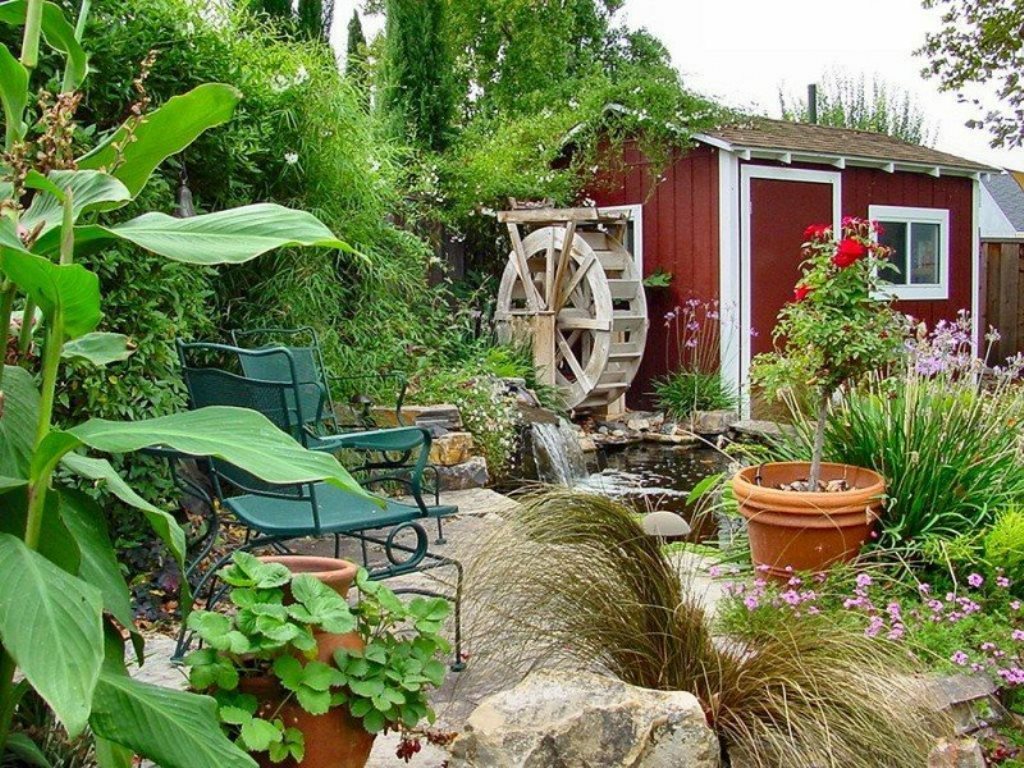
It seems that the artist, with light strokes, sketched a pictorial sketch, which suddenly came to life.
Expensive and exclusive plants will be superfluous at this celebration of nature and simplicity. But you can't do without sunflowers and spectacular pumpkins. Also, don't forget about mallow, calendula, cosmea, chamomile and marigolds. These elementary plants will create the foundation and add a unique lightness to the rustic style.
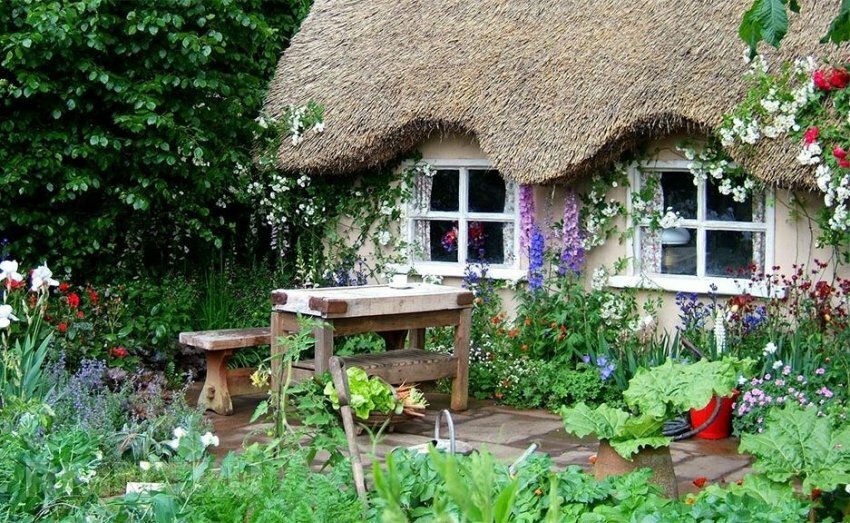
In the country style, the construction of wooden arbors, the creation of man-made ponds and streams is encouraged.
In the village garden, there is sure to be a place for a spectacular garden scarecrow, rough benches and hedges. Wicker wicker furniture and decor elements look harmonious in this style.
Chinese
More and more Oriental lovers are trying to recreate the Chinese style in their suburban area. This desire is understandable, because this style is hundreds of years old, it is harmonious, but very unusual for a European.
A Chinese-style garden abhors symmetry, straight lines and clear outlines. Its founders are sure that energy can circulate freely only in non-human space.
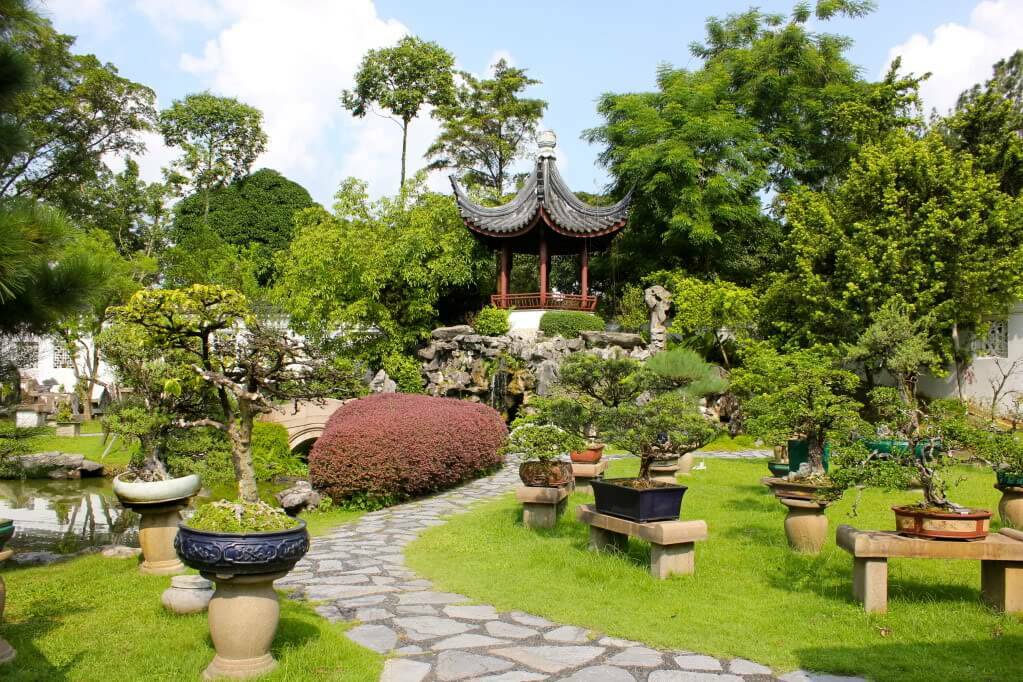
The special features of the Chinese style in landscape design are the elegance of lines, the richness of colors, the desire to make the complex out of the simple, without violating the natural harmony.
The main characteristics of the Chinese landscape:
- All items are required to create complete compositions;
- Such a garden becomes an ideal place for meditation;
- A sense of boundlessness must be created. This is achieved in the following way: a new landscape is seen from each point of the garden;
- Water must be present both at rest and in motion
- The Chinese landscape is impossible without a tea gazebo;
- Amazing variety of plants.
Such a garden is a kind of model of the world, which means that the impression should be created that pines, boulders, streams and bamboo appeared naturally, and were not planted and placed according to someone else's scheme. To complete the composition, a fence is installed that repeats all the lines of the relief and is crowned with a wooden gate, complemented by a wise aphorism.
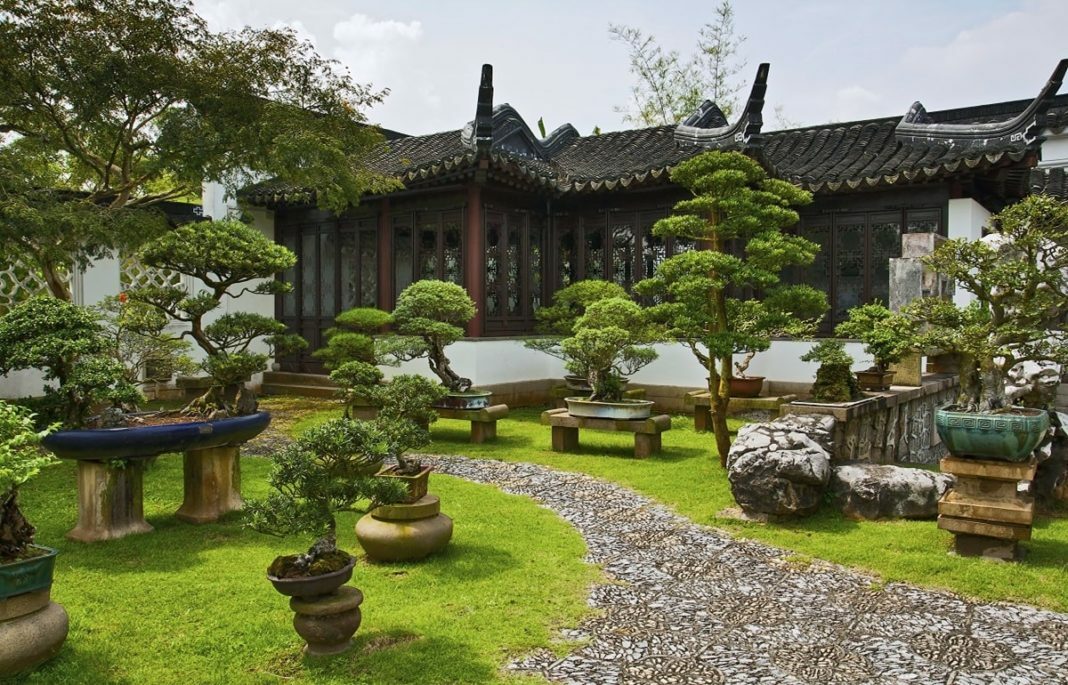
The space is artificially stretched due to the large length of winding hiking trails, the inclusion of water compositions in the landscape.
The place for the tea house is set aside at a certain elevation, so that it is convenient to admire the vastness from it.
Chrysanthemums, jasmine, peonies, tea roses, irises are considered obligatory for the Chinese garden. And from the trees - pine, juniper and peach.
Scandinavian
This trend appeared in the middle of the 20th century and every year it becomes more and more popular. This style finds its application not only in the suburban area, but also in the interior of the rooms.
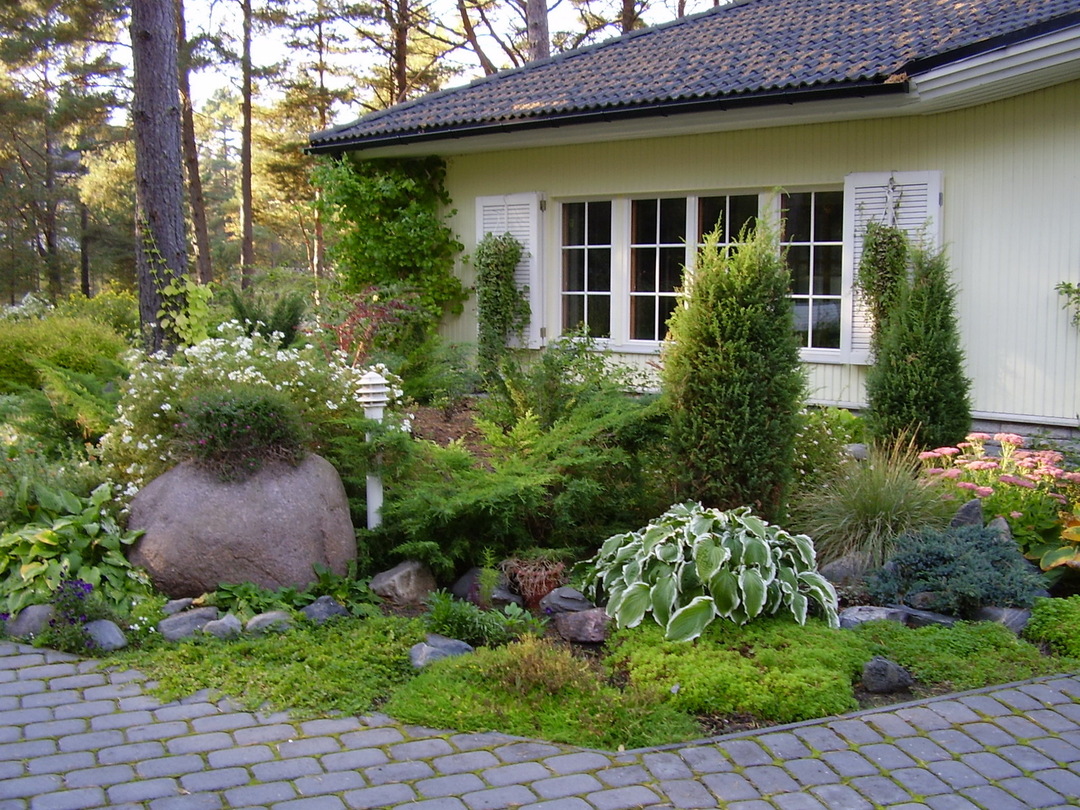
Nothing should distract from the contemplation of natural harmony or immersion in your own thoughts.
The main features of the Scandinavian garden:
- Restraint, functionality, orderliness;
- Unusual flower beds and shrubs are used as accents;
- The garden is compact, divided into functional areas;
- Restrained color palette, no riot of colors. A combination of green, brown and gray is relevant;
- Figurines of fairy-tale characters are used as decorative elements;
- Natural materials in a natural color are the best option for additional finishing;
- On such a site, an open gazebo with a fireplace looks harmonious;
- An irregularly shaped pond surrounded by plants;
- Conifers, grasses and green hedges are ideal plant options for the Scandinavian landscape;
- Flower pots and miniature flower beds complement the overall design concept.
An important point: the Scandinavian style has no restrictions on the area of the site, climatic conditions and the relief of the territory. You can recreate it anywhere.
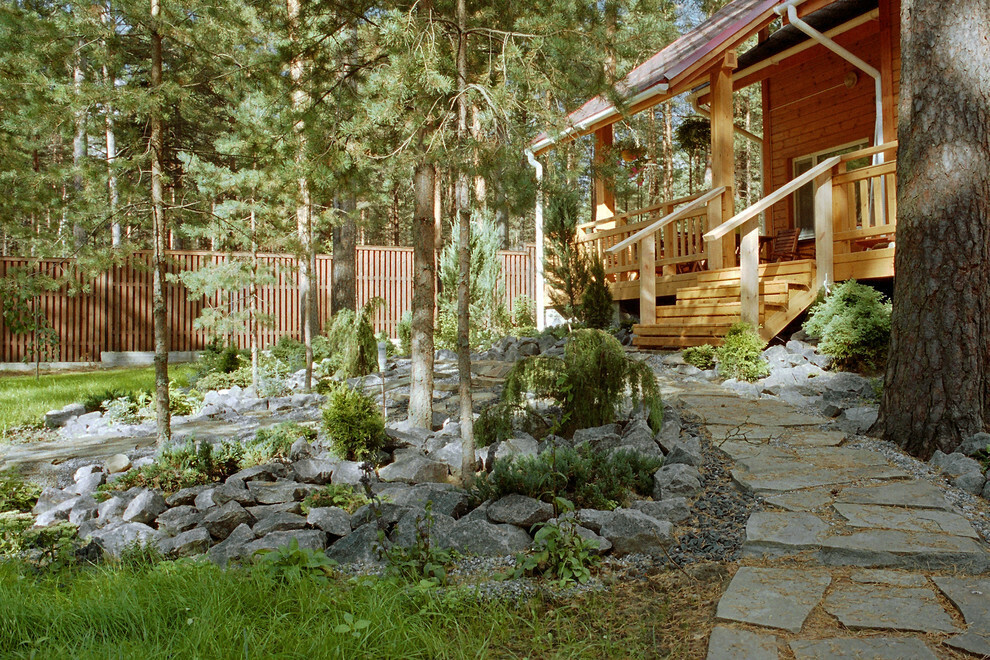
New destinations have personality, but do not require adherence to strict norms.
Choosing a style for decorating a personal plot is a serious task. In the end, it depends on how comfortable your stay will be. And if you can't create an ideal landscape with all the subtleties, don't despair. Perhaps a few elements of style will be enough to make the garden look harmonious and beautiful.


